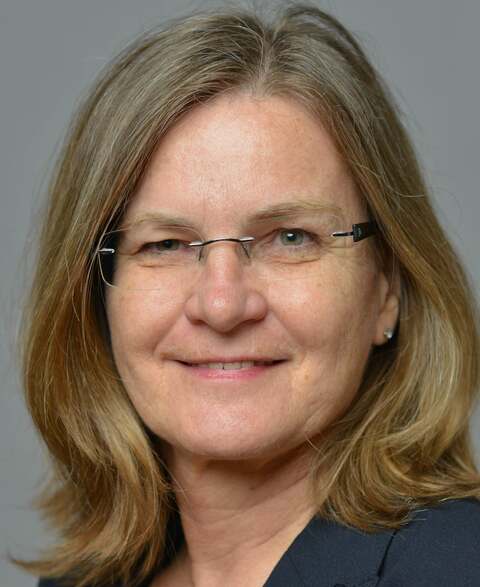Probing and manipulating atomic-scale defects
The properties of 2D materials are critically affected by defects such as missing atoms, foreign dopants, adsorbates, domain boundaries, and edge effects. These can be accessed individually by applying the latest developments in scanning probe techniques that provide atomically-resolved images of dielectrics (Fig. 1a [1]). Such experimental results are a direct match to DFT calculations, and together yield valuable insights into defect properties. The strong field underneath the probe tip can also manipulate single defects, see Fig. 1b [2], while the electronic defects can be created and chemical reactions performed by deliberate injection or removal of electrons using the probe tip [3,4].
© Ulrike Diebold
Atomically-resolved imaging and manipulation of defects. (A) Isolated point defects at NaI, taken with ncAFM. Each defect consists of the dopant, Eu, which sits in a subsurface layer, and a charge-compensating Na vacancy at the surface [1]. (B) Single oxygen vacancies on a TiO2(101) anatase surface [2]. The center area (inside yellow markers) was scanned with a high STM bias voltage that caused oxygen vacancies to move from the bulk of the material to the surface. The small panels in (A, B) show the individual defects in detail (top: theory, based on DFT, bottom: experiment)
Goals
The goal of the PhD project is to apply this surface science approach to characterize selected materials with the aim of potential application in next-generation nanoelectronics. As a dielectric, we aim to synthesize epitaxial CaF2 on Si(111) [4] using established growth techniques, and characterize the defects that arise - both intrinsic (point defects, antiphase domains or grain boundaries, steps) and extrinsic (adsorbates, including hydroxyl groups and water, intentionally introduced dopants). Theoretical predictions exist for such defects, but experimental confirmation is still pending. As a next step, we will attempt to grow TMDs on the CaF2 layers, and characterize defects in the 2D materials and the interface with CaF2.
Methods
All experiments will be conducted in UHV chambers, equipped with low-temperature ncAFM/STM setups, and facilities for ultrathin film growth/characterization. Intensive collaborations with theory, and with device groups.
Collaborations
The Diebold group will fabricate and characterize the 2D materials with MBE in UHV. The Madsen group will provide DFT calculations of the electronic structure. The Pichler group will perform associated optical measurements of surface defects. The groups of Mueller, Libisch, and Grasser will investigate the optical, transport, and defect properties.
Supervisor
Ulrike Diebold is an experimental surface physicist. Her research program is focused on unraveling the geometric, electronic, and defect structure of the top atomic layer(s) of materials [2]. The main tool is Scanning Probe Microscopy (Scanning Tunneling Microscopy, STM, and non-contact Atomic Force Microscopy, AFM) in ultrahigh vacuum (UHV), to directly observe the atomic configuration, electronic structure, and reactivity of surfaces at the single atom/single molecule scale. Her UHV systems allow layer-by-layer synthesis of tailored materials via molecular-beam epitaxy and pulsed laser deposition.
Webpage
Group of Prof. Diebold, opens an external URL in a new window
Literature
- M. Ulreich, et al. Physical Review Materials 3, 075004 (2019) DOI: 10.1103/physrevmaterials.3.075004
- M. Setvin, et al. Science 341, 988–991 (2013) DOI: 10.1126/science.1239879
- A. S. Foster, et al. Physical Review B 80(2009) DOI: 10.1103/physrevb.80.115421
- I Sokolović, et al. Proc. of the National Academy of Sciences U.S.A. 117, 14827 (2020) DOI: 10.1073/pnas.192245211 7
- Y. Y. Illarionov, et al. Nature Communications 11(2020) DOI: 10.1038/s41467-020-16640-8
